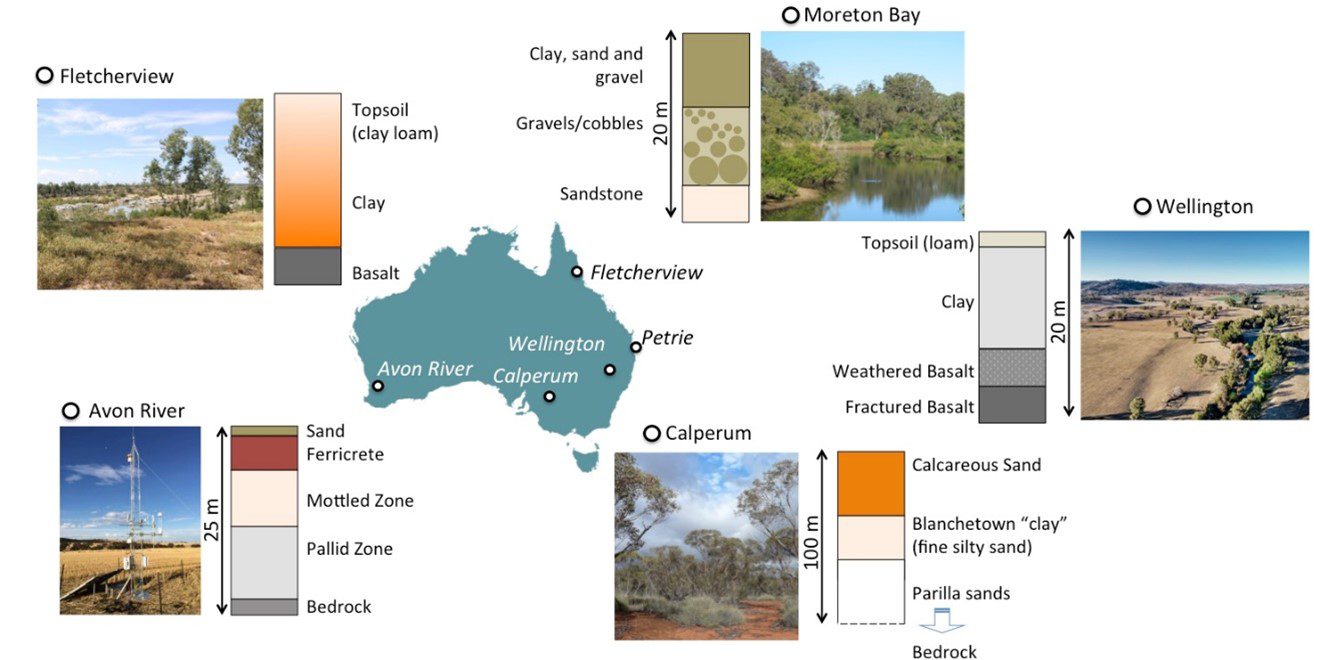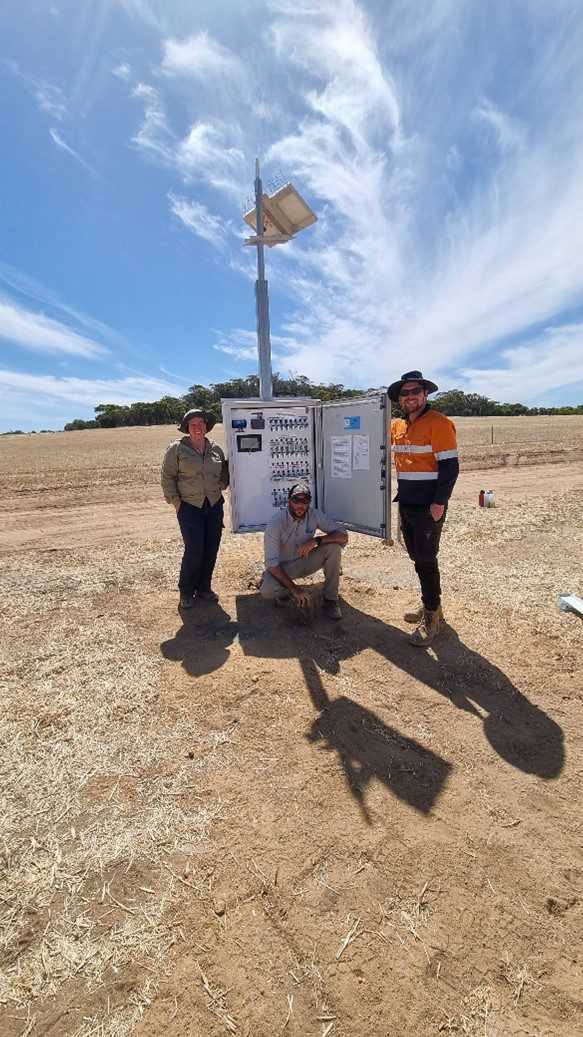
The Critical Zone
The zone at Earth’s land surface, extending from the top of the vegetation canopy through the soil to subsurface depths, at which fresh groundwater freely circulates. Defined by the National Research Council (2001), Critical Zone is the heterogeneous, near-surface environment in which complex interactions involving rock, soil, water, air, and living organisms regulate the natural habitat and determine the availability of life-sustaining resources.
The term was first introduced by Gail Ashley in 1988 and recognizes that soil connects the vegetation canopy to the soil; the soil connects to the weathered materials; the weathered materials connect to bedrock, and bedrock provides the connection to the aquifer. It is a living, breathing, constantly evolving boundary layer where rock, soil, water, air, and living organisms interact. These complex interactions regulate the natural habitat and determine the availability of life-sustaining resources, including our food production and water quality.
The Critical Zone and Groundwater
Groundwater is a fundamental, slow-moving part of the critical zone. Groundwater affects and is affected by comparatively short-timescale critical zone systems such as streamflow, vegetation, and energy fluxes across the land-atmosphere interface, as well as longer-term processes like weathering.
Groundwater is a key but often overlooked component of critical zone science, both a boundary and an essential store in this integrated earth system. Yet groundwater is frequently overlooked. This is partly due to the challenges in accessing and monitoring groundwater and its slow movement relative to other parts of the critical zone.
A significant and leading example can be found in Australia. Australia has established a research infrastructure – The OzCZO or Australian Critical Zone network – consisting of multiple Observatories across the Australian continent. The OzCZO is designed for advanced studies of biogeochemical processes and elemental/isotope cycles within near-surface reservoirs, including vegetation, soils, vadose zone and groundwater.
VMS in the Australian Critical Zone Observatory Network (OzCZO)
Five of the OzCZO sites have Sensoil’s Vadose zone Monitoring Systems (VMS) installed. The first site is the Calperum Mallee SuperSite, situated within the internationally renowned UNESCO Riverland Biosphere Reserve in South Australia. VMS provides continuous and real-time data as well as sampling ports for the on-demand collection of pore water from the unsaturated zone, fluids and gases, for geochemical/isotope investigations, pedogenesis problems and modelling studies.
The University of Western Australia (UWA) Associate Professor Sally Thompson, who co-leads the ARC LIEF funded OzCZO network, has stated that VMS will enable researchers to measure how much water is in the soil, as well as sampling water and gas from within the soil profile.
The data and analyses from the VMS will help understand how agricultural management affects water, soil and carbon health. This data-based research can then be applied to numerous other sites. The collaboration between The University of Western Australia, NCRIS-enabled AuScope, and Sensoil is also a major step in the progression of the TERN Australia-supported OzCZO network. TERN’s data infrastructure is making the OzCZO data openly available to researchers and decision makers around Australia and across the world, to better understand and manage the availability of its life-sustaining resources.
The OzCZO project is managed by a team of researchers from the University of Western Australia, the University of Adelaide, the University of the Sunshine Coast, James Cook University and the University of New South Wales.C

Global CZO Research
The Australian continent contains extremely diverse and also one of the oldest and most intensively weathered and nutrient-deficient soils on earth. In addition, being the driest inhabited continent on Earth, Australia can also provide important lessons and insights into what might happen to soils and associated biogeochemical cycles on our planet in the near future, expected to be dominated by progressively warmer temperatures and extreme weather events.
Possible future research directions can be done in collaboration with the Australian Critical Zone Observatory Network, which geological/climatic uniqueness and ancient deeply weathered soils complement the more established CZO networks in the Northern Hemisphere (Europe, USA) on more recent soils and glacially weathered terrains.
One of the most important applied aspects of the global CZO network will be the development of reliable data that will lead to enlightened policy and management of the geoscience base of Earth. After all, the critical zone is where humanity and most terrestrial life reside.
The name “Critical Zone” has become a fashionable term, but very little, truly integrated work occurs at the CZOs. This will only be possible when it is recognized that the real thread that connects all the components of the critical zone is water.
Groundwater Hydrology and Critical Zone Science
Groundwater hydrology is of fundamental importance to critical zone science, including sustaining streamflow and vegetation, reacting with minerals to produce dissolved solutes and regolith, and influencing energy fluxes across the land-atmosphere interface. As climate changes, the timing and type of precipitation shift. Groundwater may play an even more important role in processes as a sustainable water source for plants and streamflow. The long timescales of processes that involve groundwater necessitate data collection efforts beyond typical federal funding timespans. Sustaining monitoring networks such as VMS, and developing new ones aimed at testing hypotheses related to slow-moving, groundwater-controlled critical zone processes should be a scientific priority.
References
Singha, K. and Navarre-Sitchler, A. (2022), The Importance of Groundwater in Critical Zone Science. Groundwater, 60: 27-34. https://doi.org/10.1111/gwat.13143
Giardino, Rick & Houser, Chris. (2015). Introduction to the Critical Zone. Developments in Earth Surface Processes. 19. 1-13. 10.1016/B978-0-444-63369-9.00001-X.